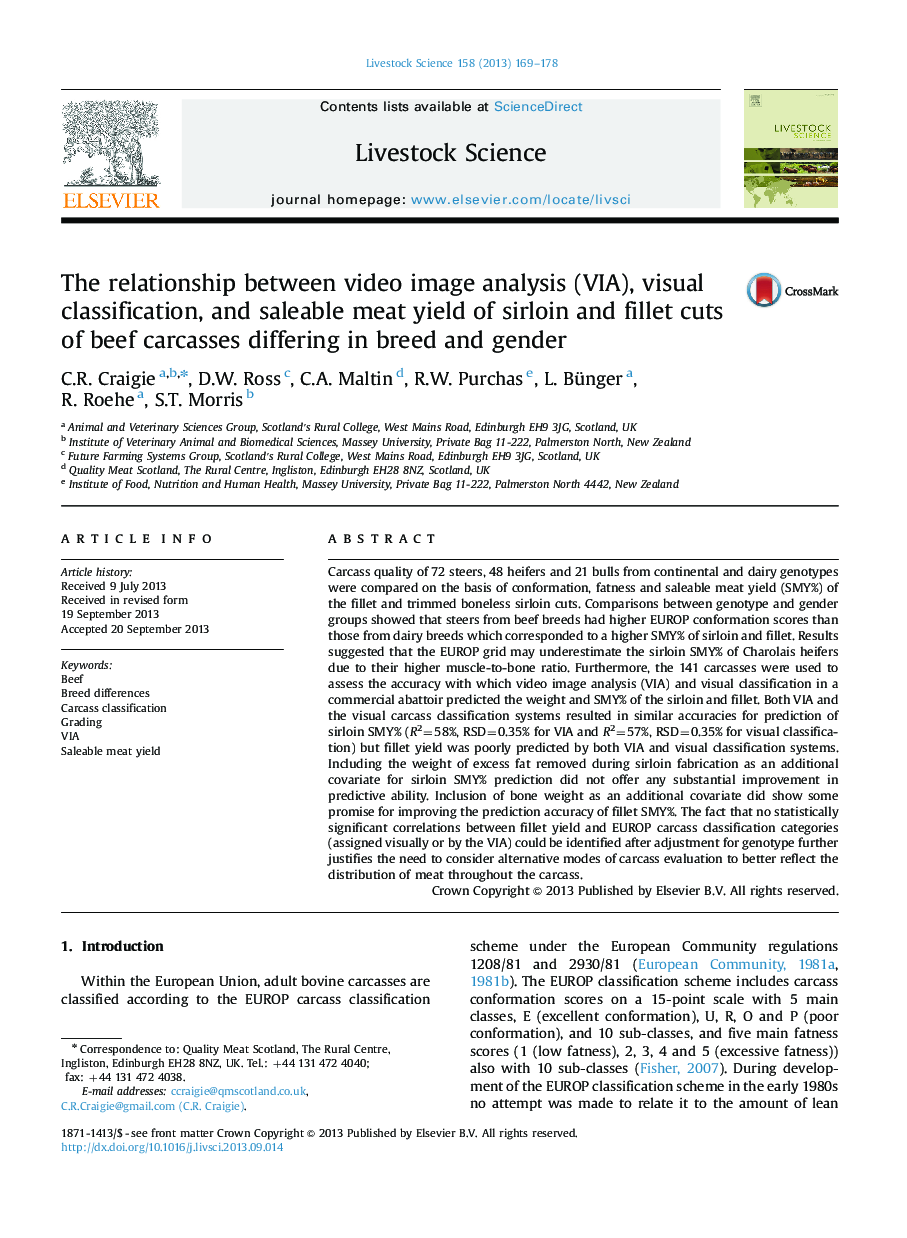| کد مقاله | کد نشریه | سال انتشار | مقاله انگلیسی | نسخه تمام متن |
|---|---|---|---|---|
| 5790305 | 1553974 | 2013 | 10 صفحه PDF | دانلود رایگان |

Carcass quality of 72 steers, 48 heifers and 21 bulls from continental and dairy genotypes were compared on the basis of conformation, fatness and saleable meat yield (SMY%) of the fillet and trimmed boneless sirloin cuts. Comparisons between genotype and gender groups showed that steers from beef breeds had higher EUROP conformation scores than those from dairy breeds which corresponded to a higher SMY% of sirloin and fillet. Results suggested that the EUROP grid may underestimate the sirloin SMY% of Charolais heifers due to their higher muscle-to-bone ratio. Furthermore, the 141 carcasses were used to assess the accuracy with which video image analysis (VIA) and visual classification in a commercial abattoir predicted the weight and SMY% of the sirloin and fillet. Both VIA and the visual carcass classification systems resulted in similar accuracies for prediction of sirloin SMY% (R2=58%, RSD=0.35% for VIA and R2=57%, RSD=0.35% for visual classification) but fillet yield was poorly predicted by both VIA and visual classification systems. Including the weight of excess fat removed during sirloin fabrication as an additional covariate for sirloin SMY% prediction did not offer any substantial improvement in predictive ability. Inclusion of bone weight as an additional covariate did show some promise for improving the prediction accuracy of fillet SMY%. The fact that no statistically significant correlations between fillet yield and EUROP carcass classification categories (assigned visually or by the VIA) could be identified after adjustment for genotype further justifies the need to consider alternative modes of carcass evaluation to better reflect the distribution of meat throughout the carcass.
Journal: Livestock Science - Volume 158, Issues 1â3, December 2013, Pages 169-178